Anniversaries are special because they give you a chance to review, reflect and reminisce all that has been achieved whilst enjoying a metaphorical ‘pat on the back’.
To go back 30 years, John Lyon’s Charity was established in 1991 as a grant-giver to help children and young people within North and West London. Since then, we have supported over 1,730 organisations and have given over £156million in grants. Throughout 2021 we are going to be celebrating 30 of the organisations, initiatives and projects we have funded and look at the way they have evolved, grown and enhanced the lives of thousands of children and young people within the Beneficial Area.
5. Royal Albert Hall – Making music across the Beneficial Area
For almost two decades, John Lyon’s Charity has had a longstanding relationship with the Royal Albert Hall (RAH) and witnessed success after success through the projects we’ve funded.
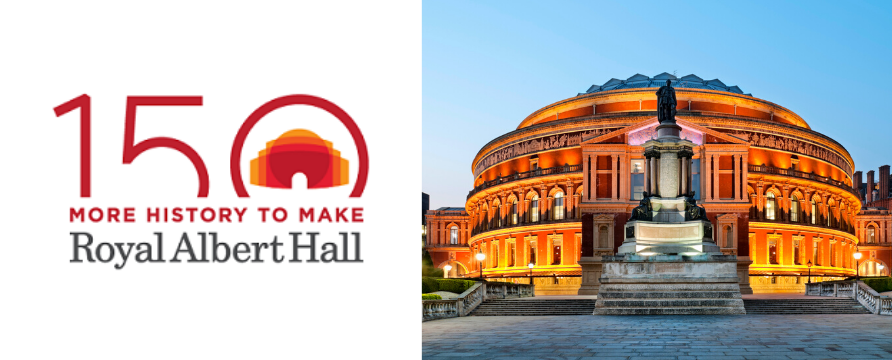
Engagement is central to the Hall’s mission, reaching out to children, teachers, young people, families and community groups and impacting c200,000 people each year. In November 2019, we awarded a very special grant to RAH to enable their flagship 150th anniversary project to take place, with the idea of community at its heart.
This project is designed to celebrate the work that RAH’s Engagement programme delivers. It comprises of a major composition project, targeted at young people who have demonstrated a high level of musical ability culminating in a celebratory performance at the Royal Albert Hall on 29th March 2021, the exact date of the Hall’s 150th anniversary. Unfortunately, due to Covid-19 restrictions, the event could not go ahead as scheduled in March, but we are absolutely delighted that this flagship performance is now scheduled to take place on 19 July 2021.
Students from six schools across the Tri-Borough have worked alongside David Arnold, the internationally famous, Grammy winning composer (Casino Royale and London Olympics Opening Ceremony) and James Moriarty, an experienced workshop leader, to contribute towards a composition taking ten major events in the history of the RAH as inspiration. A choir made of young people engaged through the Tri-borough Music Hub, plus groups of singers from local secondary schools have been rehearsing with tutors and singers from the National Youth Choirs of Great Britain and professional musicians from RAH’s in-house band, Albert’s Band. In addition, SEND students from schools across the Tri-Borough area will be involved in a series of workshops focussing on the different vocational opportunities within the Arts. Students will be involved with areas such as ticketing, box office, marketing, programme design, event management and front of house.
This work is hugely important to the Hall, as they strive to uphold the founding principles of Prince Albert in promoting the arts and sciences and enabling access for everyone. Without our grant they would not be able to be so ambitious with their plans and impact as many people in the local community. It is hoped that following this experience, further learning and work experience opportunities will be developed with these students at RAH. This project provides a hands-on opportunity for young people to gain music-making and compositional skills, working alongside a world-class composer and within an internationally famous venue. This opportunity is not available to them anywhere else and for those who would most benefit from this type of education, this is the opportunity of a lifetime. Coming hot off the heels of an extended period of lockdowns, where cultural engagement for all has been very limited, this really will be an experience not easily forgotten.
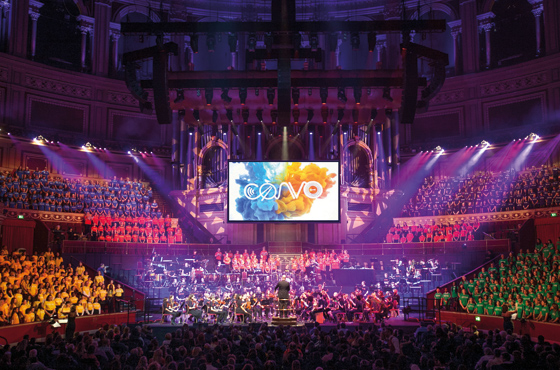 However, this is not the only project we are proud to be a part of. In 2019, John Lyon’s Charity supported an exciting new piece entitled ‘Convo’ by rising London-based composer and Royal College of Music graduate, Charlotte Harding. Thanks to our core funding, this ambitious project saw young musicians from schools across Hammersmith and Fulham, Kensington and Chelsea and Westminster work together on a world premiere which was performed at the Royal Albert Hall. This musical journey was such a success that Charlotte Harding went on to win an Ivor Composers Award for this incredible composition within the ‘Community or Educational Project’ category.
However, this is not the only project we are proud to be a part of. In 2019, John Lyon’s Charity supported an exciting new piece entitled ‘Convo’ by rising London-based composer and Royal College of Music graduate, Charlotte Harding. Thanks to our core funding, this ambitious project saw young musicians from schools across Hammersmith and Fulham, Kensington and Chelsea and Westminster work together on a world premiere which was performed at the Royal Albert Hall. This musical journey was such a success that Charlotte Harding went on to win an Ivor Composers Award for this incredible composition within the ‘Community or Educational Project’ category.
Flo Schroeder, Senior Programming and Engagement Manager at the Royal Albert Hall says “Funding from JLC has been fundamental to helping us achieve our mission to reach as many people as possible. JLC’s financial support has enabled us to deliver a wide variety of high quality projects over many years which are designed to have a lasting impact on those involved. We have a responsibility to make a positive impact on our local community, and we want children and young people to be part of the story of the Royal Albert Hall. It is important to us that our anniversary celebrations are inclusive and outward-looking, reflecting our reputation as ‘the Nation’s village hall’.
RAH is committed to giving back to our local community and have worked with local borough councils across our Beneficial Area for many years. Our relationship evolved due to our joint mission to help build positive communities. Flo adds “it has been our hope over this time to provide life-enriching opportunities for young people to engage with the Royal Albert Hall when they otherwise not be able to have done. The first scheme that JLC supported back in 2005 was a Young Person’s ticket scheme to encourage new audiences, and our commitment to providing access to the Hall for everyone is still at the heart of what we do. Since then, the partnership has grown and grown”.
As an independent charity that receives no recurrent government funding, the Hall relies on the generosity of Seat holders, Friends, Patrons, Trusts and Major Donors to continue changing lives through the power of music and we could not be more thrilled to contribute to this auspicious event. To find out more about the Royal Albert Hall, please click here.
4. Historic Royal Palaces: Bringing community together through culture
The Charity’s Beneficial Area contains an extraordinary number of world class Arts venues and establishments and we work with these institutions to find strategies and develop engagement activities that target schools, young people and their families to help them take an active role in these Arts venues that are on their doorstep. We have seen first-hand the positive impact art and culture has on children and young people and our next Throwback Thirty celebrates the importance of these types of institutions.
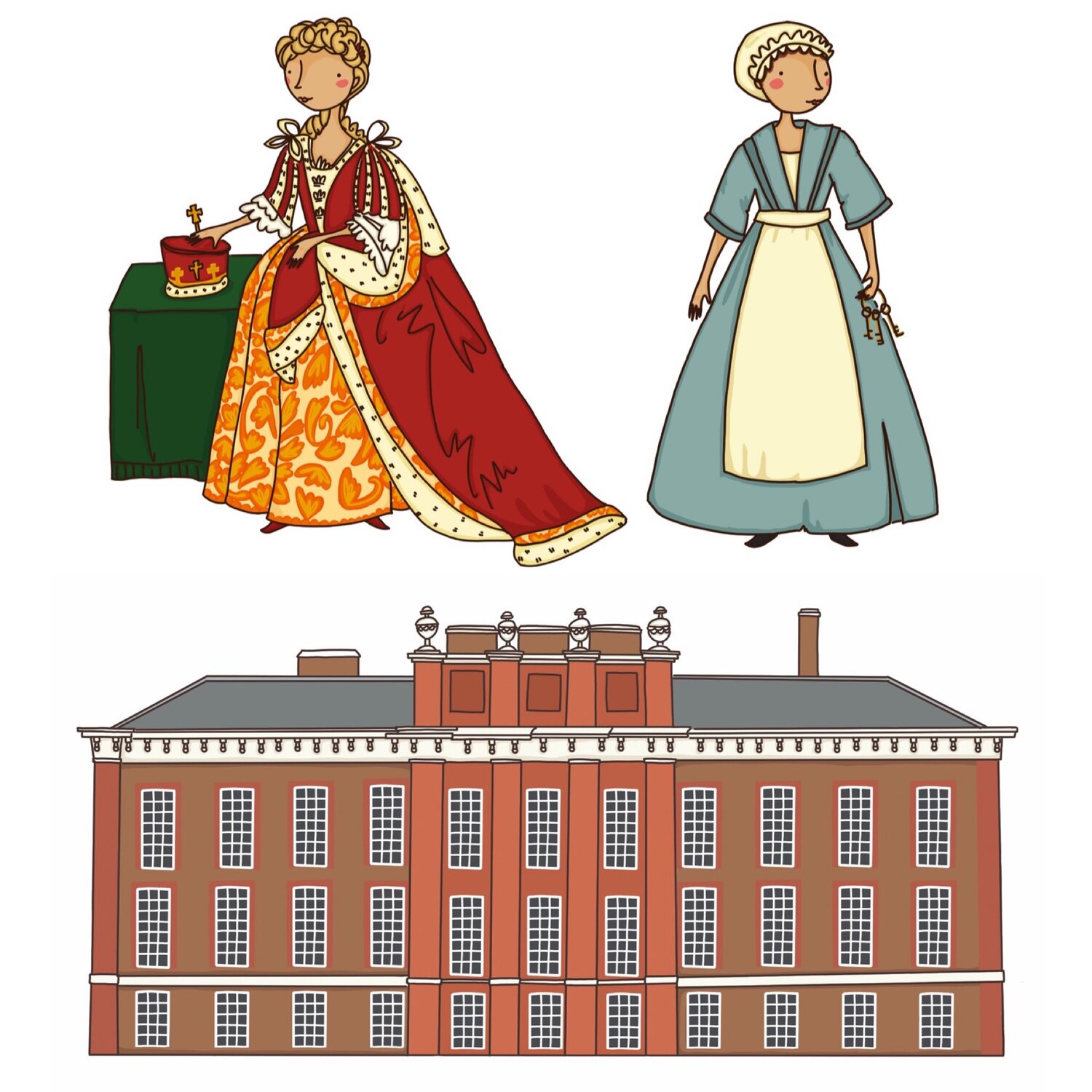
Back in 2009 we were contacted by the team at Historic Royal Palaces (HRP), when they were planning their first schools service to operate from Kensington Palace. Their ambition was to create a programme that would reach schools that don’t always take advantage of the great cultural offer on their doorsteps in the borough of Kensington. Taking our usual approach of working alongside organisations to create the best applications, we had a wide-ranging conversation about HRP’s education and outreach programmes. It was immediately made clear that HRP’s ethos, methodology and approach to wider learning could be extremely beneficial to the children and young people in the Charity’s Beneficial Area. This was the beginning of a relationship that was to see John Lyon’s Charity, and the funding that Kensington Palace secured from us, play a vital role in the shape and direction of their future learning and education programmes.
In 2010-12, HRP embarked on an ambitious re-presentation of Kensington Palace. Prior to this project Kensington Palace struggled to attract many visitors and very few school, community or family groups visited. As part of the re-presentation project an organisational objective was to grow HRP’s school, community and family audiences within the neighbouring Kensington area.
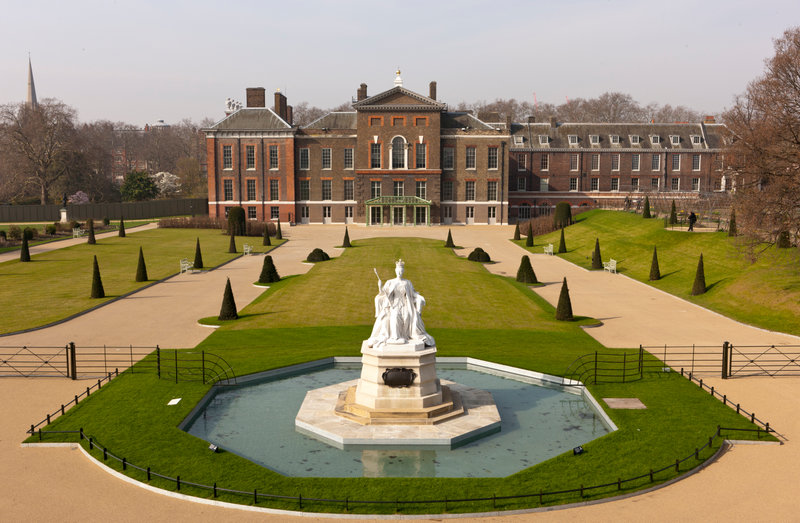
Kensington Palace,Robin Forster,The East Front. The statue of Queen Victoria, by her daughter Princess Louise, was installed here in 1893
Using the hugely popular and well-established Palace Explorers programme delivered at the Tower of London and Hampton Court Palace , in 2010 John Lyon’s Charity awarded HRP a grant of £25,000 per annum for three years to establish Palace Explorers at Kensington Palace with a remit to target schools in Kensington & Chelsea. During the project, many approaches and techniques were trialled to engage children in the history of the Palace such as story building and storytelling, art and design, role-play and drama and object handling. The sessions happened both onsite at the Palace as well as in schools themselves and were supported by a range of digital and print resources. This ensured that relationships with schools, communities and individual families became established. The resources produced were distributed widely via local and national partners ensuring many more schools and families benefitted from the projects.
Crucially, the project culmination was to be scheduled on a Saturday to encourage children to return to the Palace with their families and act as a guide. Encouraging family participation at events after in-school learning activities have taken place is incredibly difficult to achieve and in the Charity’s experience funding provided for past projects in different institutions that sought to achieve this had seen limited success. Over the three years, over 1,000 children participated in the Palace Explorers project, and around half of those children returned to the Palace at some stage with their families, an incredible achievement.
In 2013, studies revealed that the UK was falling behind international rankings in literacy and one in six people in the UK had a literacy level below that expected of an 11 year old. In recent years, there has been an increase in the numbers of children beginning primary school with difficulties in spoken English, partly because of an increase in the numbers of children speaking English as an additional language. In 2014, the then new National Curriculum for primary schools in England, introduced higher educational expectations and placed increased emphasis on the mechanics of literacy: phonics, spelling and grammar. In this context, Historic Royal Palaces conceived the Curious Stories project again with the support and funding from John Lyon’s Charity.
The project focussed on working with schools and communities in the north of the borough where more low-income families are located and where over 150 different languages are spoken. For many teachers, the time they were now having to dedicate to these technical areas was at the expense of time spent inspiring children around reading, writing, speaking and listening and encouraging a love of stories and the language needed to tell them.
The overall aim of Curious Stories was to support the development of social and verbal communication skills amongst young children (aged 4-7) and their parents and carers. For children, the project aimed to generate excitement and curiosity through stories, to inspire imagination and to build confidence. For parents, the project sought to raise awareness of the importance of communication with their children and to build confidence and skills in this area so that they could support their child’s learning.
Alison Lightbown, Head of Schools and Communities at Historic Royal Palaces said:
“We were delighted that JLC could enable HRP to get the education programme off the ground with a distinctive and new initiative, which became known as Palace Explorers. With the expertise we developed in using Kensington Palace as a resource for literacy, Curious Stories was a logical next step for us, and we were thrilled that JLC wanted to continue their support for our programme and to reach more young people. The children who took part in Curious Stories showed better oral story telling than children in control groups. Their written stories also contained more descriptive elements. Parents and teachers were very positive about the effects of the programme and the opportunities for linking historical knowledge to language development through oral storytelling. The success of the Palace Explorer and Curious Stories projects positively influenced organisational attitudes towards school, community and family audiences within the Kensington area. As a result, much greater emphasis has been placed on children as a key audience, leading to the development and delivery of a regular family programme of art, design, storytelling, trails and digital missions at Kensington Palace. We reviewed the schools programme and introduced new literacy sessions and content. In 2019 we opened Victoria: A Royal Childhood, for the first time family and school groups were considered a priority audience and this shaped the content and design of the exhibition”.
Alison adds “We know that access to arts, culture and heritage can have a positive impact on health, well-being, educational attainment and builds cultural capital. Funding from organisations such as JLC is vital to enable all children to have access to a rich cultural and creative education and to grow-up as both confident consumers of and contributors to arts, culture and heritage”.
In the last thirty years we have fought hard to protect the Arts sector and will continue to do so for the foreseeable. We would like to take this moment to remind our groups of the Cultural Capital Fund available to schools and Arts organisations, which is designed to ensure that access to high quality Arts activities, delivered by the best Arts practitioners, are accessible to all children across the Beneficial Area.
3. The power of community in times of crisis
Looking back over thirty years, there is much to celebrate. However, thinking about the events of 2020 we can’t forget what happened in the summer of 2017 following the tragic events at Grenfell Tower and the synergy in our approach to responding in a crisis.
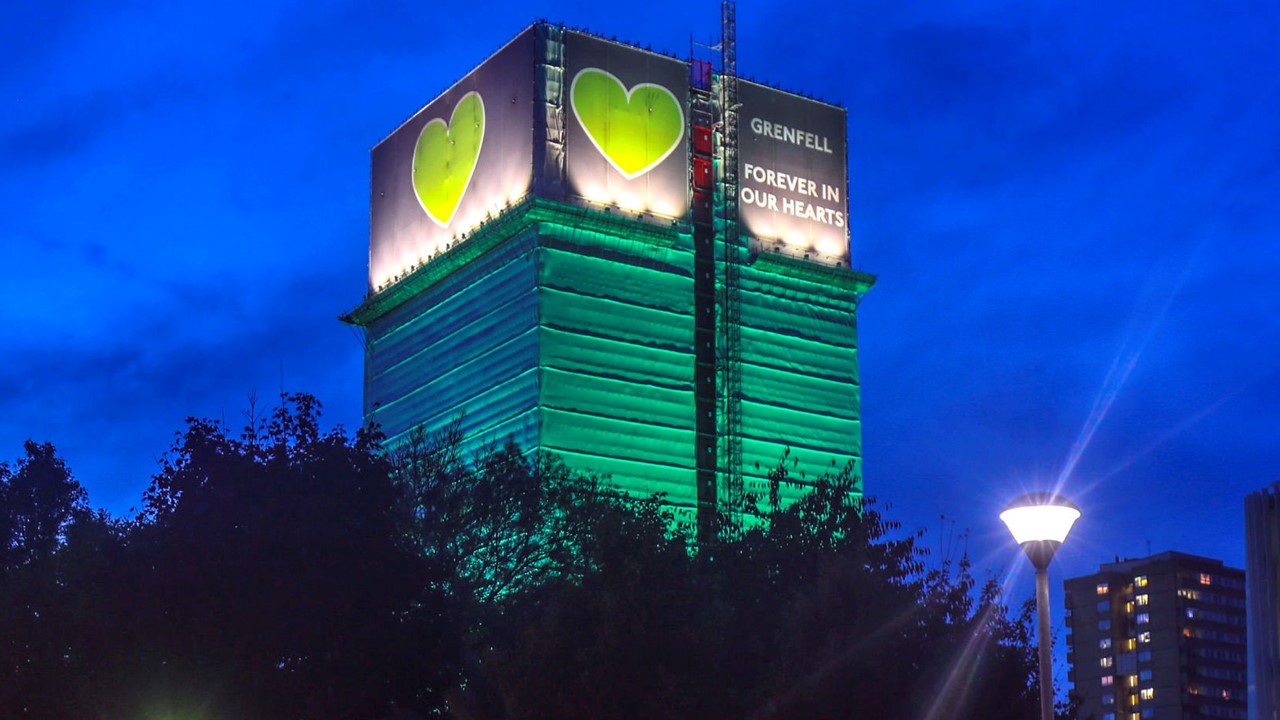
The fire which destroyed Grenfell Tower sent shockwaves across London and the world.
This residential tower block in North Kensington is based within the heart of our Beneficial Area. We knew of many of the people and communities that live there through the groups that we fund and quickly decided to do all we could to help members of this much-loved community.
Traditionally, Kensington & Chelsea as a local authority area is often overlooked for funding and support from outside agencies. Parts of the borough are the most affluent in the country, if not in Europe. However, in pockets, such as North Kensington, levels of deprivation and need are incredibly high. In the first days and weeks following the fire, we worked closely with other funding organisations and London Funders to create an emergency response strategy to support the communities living in the area that had been affected. John Lyon’s Charity was able to use its experience and knowledge of the area to help others navigate the complex landscape and galvanise this support to help direct funding to organisations on the ground, supporting those who needed it the most.
 What was striking about this approach was that out of the embers came strength and community. Funders stepped outside their normal practices through raising additional funds, collaborative delivery, changing the application process to a far simpler format to ensure quicker release of funds and swift, efficient decision-making. It was incredibly powerful to witness how local organisations came together to support each other with funding applications, ideas for projects and sharing resources. London Funders provided a platform for mobilising the emergency response by setting up a Community Core Costs Fund. This Fund aimed to get money out quickly to some of the frontline and grassroots organisations who had responded to the fire or who were meeting wider community needs. The funding for this programme was provided by the Department of Community and Local Government and The Tudor Trust. Over £1.1m was distributed during July to 100 local community groups, faith groups, schools and residents associations for the extra equipment, spaces, food, supplies or staff needed to support local communities for 3-6 months.
What was striking about this approach was that out of the embers came strength and community. Funders stepped outside their normal practices through raising additional funds, collaborative delivery, changing the application process to a far simpler format to ensure quicker release of funds and swift, efficient decision-making. It was incredibly powerful to witness how local organisations came together to support each other with funding applications, ideas for projects and sharing resources. London Funders provided a platform for mobilising the emergency response by setting up a Community Core Costs Fund. This Fund aimed to get money out quickly to some of the frontline and grassroots organisations who had responded to the fire or who were meeting wider community needs. The funding for this programme was provided by the Department of Community and Local Government and The Tudor Trust. Over £1.1m was distributed during July to 100 local community groups, faith groups, schools and residents associations for the extra equipment, spaces, food, supplies or staff needed to support local communities for 3-6 months.
JLC’s emergency response to support London Funders was to put out a specific call for action by organising a formal meeting of funders. Alongside local partners, we coordinated a Children and Young People Funder Coalition to help organisations working with children and young people affected by the fire at Grenfell Tower to access funding. Using our contacts and local reputation, the Grants Team headed into North Kensington to hold four whole-day, one-to-one drop-in surgeries for community groups to discuss funding needs and ran one large scale feedback workshop that had approximately 85 representatives from community groups. This happened within ten days of the fire.
The Children and Young People’s Coalition Funding was for local organisations working with children, young people and families affected by the Grenfell Tower Fire. The funding for this programme was provided by a range of funders including the Big Lottery Fund, The Tudor Trust, BBC Children in Need, City Bridge Trust, Royal Borough of Kensington and Chelsea, Kensington & Chelsea Foundation and the Department for Education. The Coalition ran two phases of funding. Phase one saw funders provide grants of £1.07m to 61 organisations to deliver services and projects for children and young people in the summer holiday period. These ranged from day trips to the running of free activities. Phase two saw organisations apply for longer-term funding for projects delivered over the following year. These were divided into three priority areas: out of school activities; children’s emotional wellbeing; and family work. A further £1.2m was provided to 53 organisations in phase two.
To simplify the funding process, we created a single application form to ensure funds were distributed quickly and efficiently. These could then be viewed by all the funders on an online portal, created by London Funders, to make offers of grants. The models and methods used to respond to these emergencies demonstrated that it is possible to get down to the bare bones of what each funder needs in order to participate. We felt touched and honoured that we were trusted to lead by example and use our many years of experience to triage the applications using our local knowledge and expertise to ensure the application process was executed as quickly and efficiently as possible.
Here is a what a few of the organisations supported by the Grenfell Emergency Response Fund had to say:
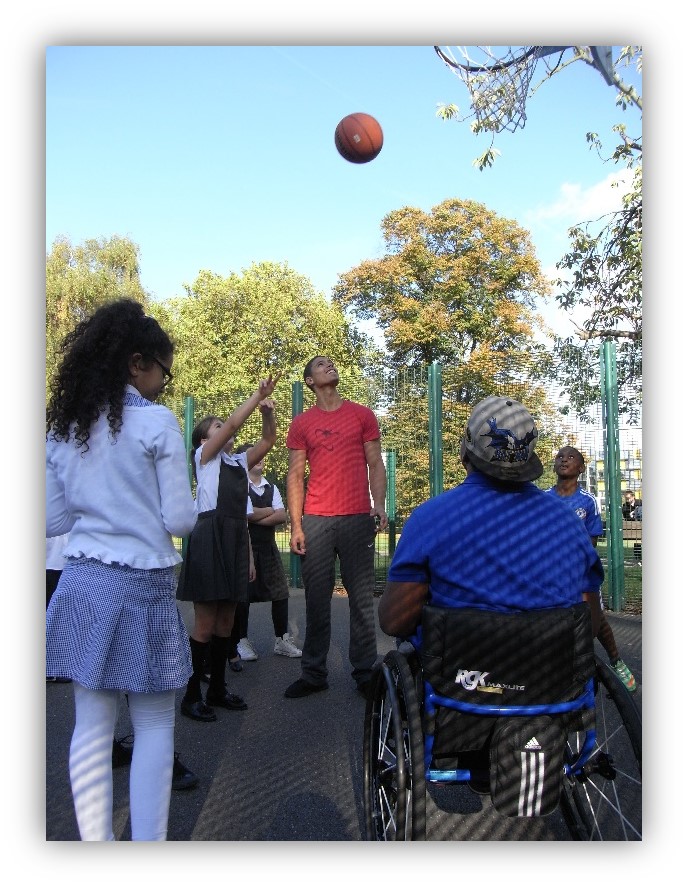
“Thanks to funding from John Lyon’s Charity via the Grenfell Response Fund we were able to provide a range of activities for families affected by the Grenfell Tragedy. The families came together with their children in a safe and friendly environment to share positive experiences, which helped the children gain confidence, make new friends and take the first steps to rebuilding their lives.” – Ulick Tarabanov, FRSA, Founder & CEO, London Sports Trust
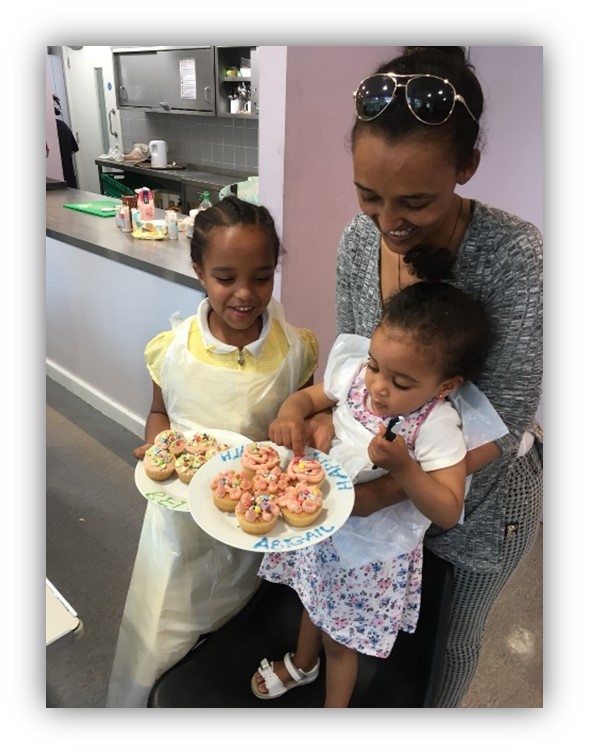
“In the aftermath of the Grenfell Tower tragedy, we were among many local voluntary organisations who stood up to help support the community during an incredibly difficult and shocking time. As we are a very small organisation with a limited reserve, we would not have been able to support the community without being awarded an emergency grant. This grant helped us to continue supporting the bereaved community as well as recruit more staff and volunteers to help. We could not have reached as many people without this emergency response funding for the Grenfell Tower funded by John Lyon’s Charity”. – Kamal Mohamed, Chairman of Westpoint Sustainable Community Development
“On the night of the Fire at Grenfell Tower, QPR Community Trust lost two participants who had participated in our Girls programme and Kicks programme. What was really important to us as the local football club was to support that community to recover in the days after the fire and the months and years ahead. It was important for us to play a supporting role and facilitate the needs of the community who needed organisations & people they could trust and react quickly to their needs. Without the support of the John Lyon’s Charity we would not have been able to provide activities and dedicated staff to facilitate the needs of the community at a time when they needed it most.” – Andy Evan, CEO of QPR
Four years on, the ramifications of Grenfell Tower continue to be felt throughout the area and will continue to do so for many years to come. As we begin to focus on the recovery process of the pandemic, it is hard not to draw significant parallels between Grenfell and the emergency response in the days and weeks that followed. It was admirable how quickly London Funder members stepped up in a time of crisis to unite with one core purpose – to ensure the survival of the Kensington community. This was the first time public and private funders in London had got together to make a real difference to its community in a time of need and it was ultimately this process that was the catalyst in thinking that led to the London Community Response in 2020. Without this joint funding approach, we may not have had the same crisis response experience and expertise to face the present pandemic and unite once again with such speed to ensure our London community is protected.
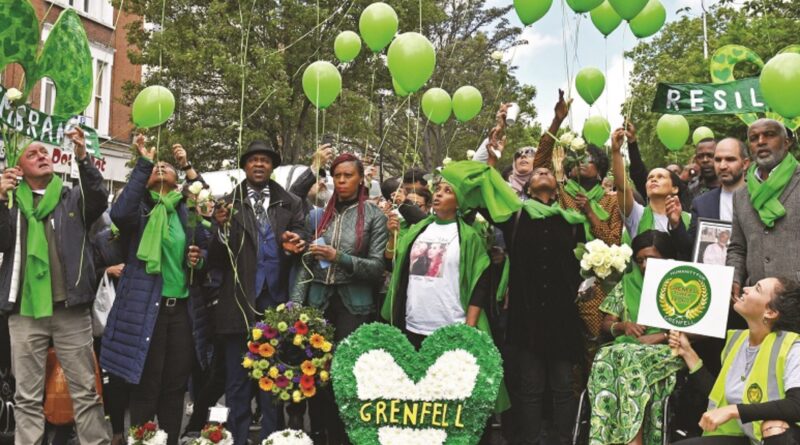
2. Perivale Primary School & The FGM Project: Getting people talking and tackling difficult topics
Over thirty years, we have prided ourselves on brokering partnerships between the voluntary sector and schools to help support the discussion of difficult topics with children and young people. As much as it is easier to shy away from conversations that may make people feel uncomfortable, these conversations are incredibly important to raise awareness around sensitive issues and get not only young people talking, but the adults around them too.
We have carefully worked with schools and organisations to ensure that the partnerships formed, result in open, sensitive and safe discussions with education at the heart of each conversation. Education plays a vital role in helping children, young people and the support networks around them understand and tackle sensitive topics. Often the most important subjects are the most difficult to talk about – not least when it comes to Female Genital Mutilation (FGM).
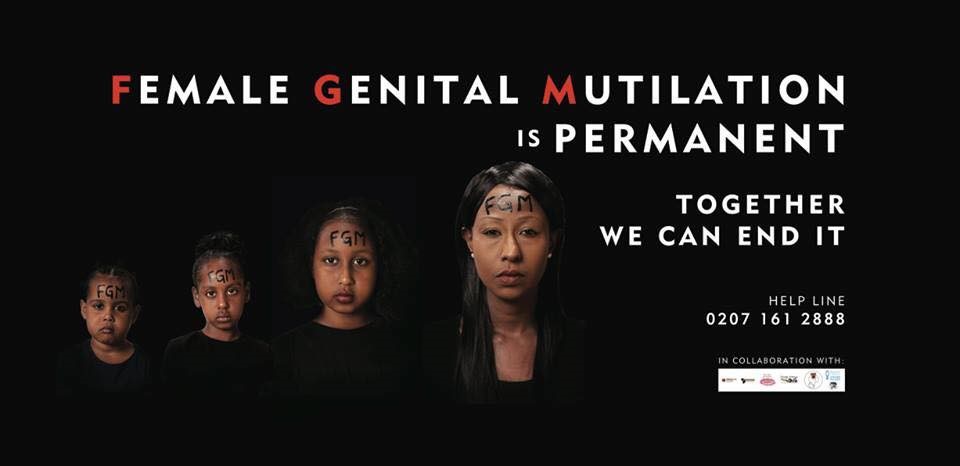
FGM is practiced on girls and young women under 18 and is not prescribed by any religion nor has any health benefits. On the contrary, the practice can cause life-lasting physical and psychological trauma. At present, 200 million girls and women alive have undergone FGM with current rates showing an additional estimated 68 million girls who face being cut by 2030. We recognised from day one that change is more often effective when driven by communities themselves. Understanding that prevention works most successfully when community and statutory bodies work together, in 2017 Perivale Primary School and the Health Improvement Team at Ealing Council approached JLC with their pioneering community-led approach to tackling FGM, which we could not ignore. It was known that Ealing was a higher potential risk of FGM due to the diversity of these areas. According to estimates by City University, back in 2017 in England there were 137,000 girls and women living with FGM and 144,000 girls at risk of it.
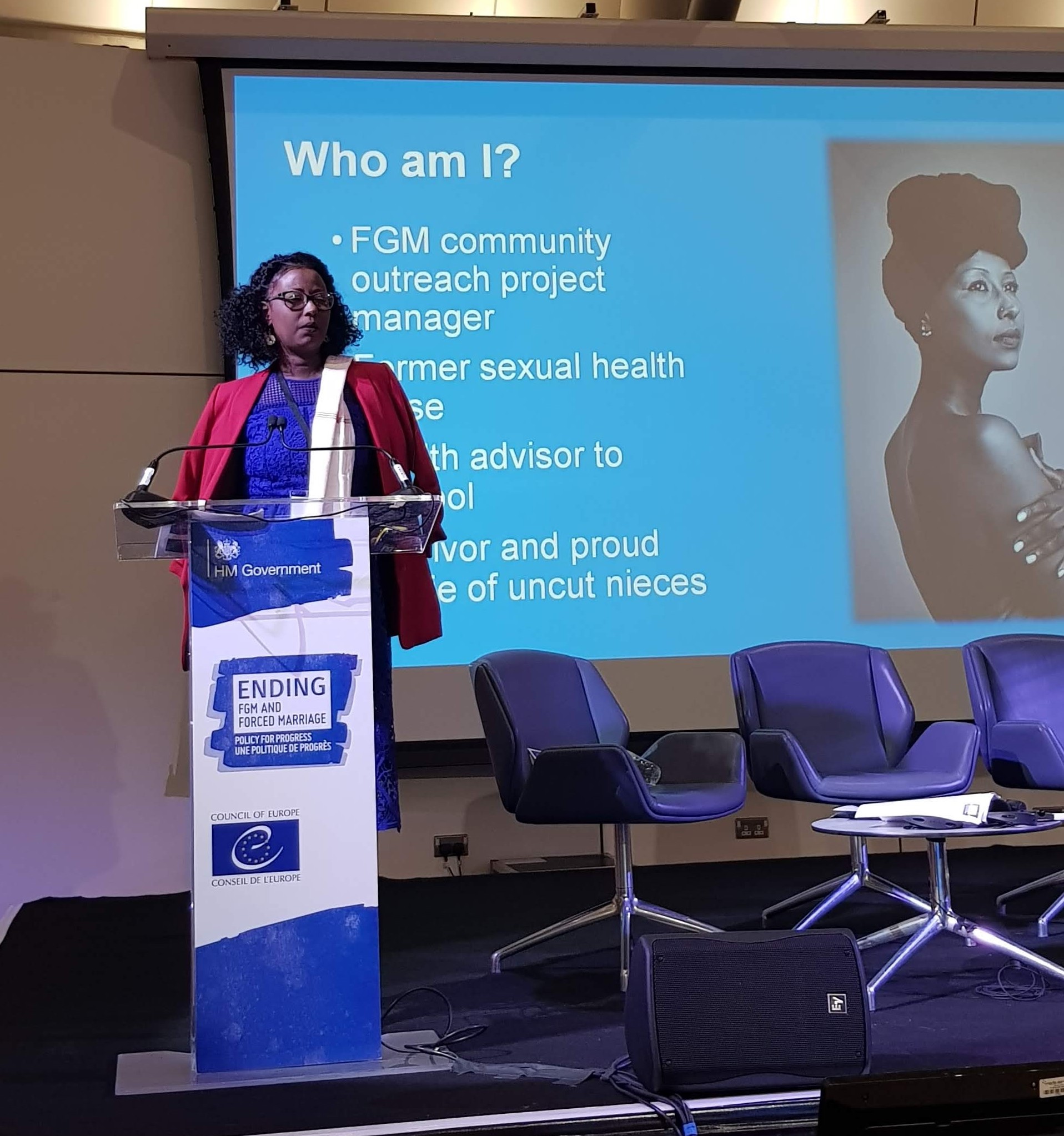 Led by Hoda Ali, a survivor, qualified nurse and national campaigner against FGM, this initiative offered a culturally sensitive approach to tackling FGM by educating primary school pupils (Years 3-6), school staff, parents and the wider community around the realities of the practice. Pupil lessons in schools cover themes from safeguarding and online safety, to relationships and good and bad touch. Workshops delivered for parents and the local community support the understanding of lessons, alleviate concerns and promote their own awareness of the implications of FGM for their children. Alongside this, school staff are upskilled to deliver sessions in school to ensure the legacy of the project. This is done in a variety of ways, including workshops, shadowing modelled lessons and regular school forum meetings. Making FGM illegal on its own has not worked. In teaching primary school pupils, educators and communities about FGM, this initiative empowers the next generation and their support networks to be heard, seek help where it is needed and ultimately end FGM. This partnership of community and statutory bodies has created a powerful model for change that will save lives, with the Charity’s funding enabling this pilot to come to fruition in the present, so that it can create long-term attitudinal change. The initiative has now received approaches by schools across the UK as it gains momentum and FGM awareness has since been added to the secondary school curriculum from 2020.
Led by Hoda Ali, a survivor, qualified nurse and national campaigner against FGM, this initiative offered a culturally sensitive approach to tackling FGM by educating primary school pupils (Years 3-6), school staff, parents and the wider community around the realities of the practice. Pupil lessons in schools cover themes from safeguarding and online safety, to relationships and good and bad touch. Workshops delivered for parents and the local community support the understanding of lessons, alleviate concerns and promote their own awareness of the implications of FGM for their children. Alongside this, school staff are upskilled to deliver sessions in school to ensure the legacy of the project. This is done in a variety of ways, including workshops, shadowing modelled lessons and regular school forum meetings. Making FGM illegal on its own has not worked. In teaching primary school pupils, educators and communities about FGM, this initiative empowers the next generation and their support networks to be heard, seek help where it is needed and ultimately end FGM. This partnership of community and statutory bodies has created a powerful model for change that will save lives, with the Charity’s funding enabling this pilot to come to fruition in the present, so that it can create long-term attitudinal change. The initiative has now received approaches by schools across the UK as it gains momentum and FGM awareness has since been added to the secondary school curriculum from 2020.
Hoda Ali, Community Outreach Project Manager for Safeguarding, Perivale Primary School says “we are now coming towards the end of our fourth year of funding from John Lyon’s Charity. The funding we have received so far has enabled us to raise awareness of Female Genital Mutilation in over 20 schools in our borough. We have worked with nearly 1,000 parents, thousands of pupils and over 500 members of staff to increase awareness, knowledge and understanding of FGM. Without JLC’s funding, we would not have been able raise awareness and knowledge of FGM, which could have been detrimental to the safety and wellbeing of young girls and women in our borough. Thank you on behalf of over 200 million women and girls who are survivors of FGM. Thank you.”
Deputy Headteacher of Perivale Primary School, Naomi Dowd adds “I have been in awe of the dedication and passion of Hoda and the team to this project and the amazing impact it has had for schools and their communities. Without the support of John Lyon’s Charity this would not have been possible”.
We have always said that it is our mission to protect the life-chances of children and young people and we are very proud to support such an important initiative in schools in Ealing. We hope to see these difficult conversations taking place for the foreseeable across the Beneficial Area and in turn creating change permanently. To find out more information about Perivale Primary School’s community led approach to ending FGM, please click here.
1. English National Ballet’s ‘Dance Journeys’ – From Young People to Young Professionals
We’ll begin with our support of English National Ballet’s (ENB) ‘Dance Journeys’ that was supported by the Charity with grants totalling £197,600 from 2013 to 2019.
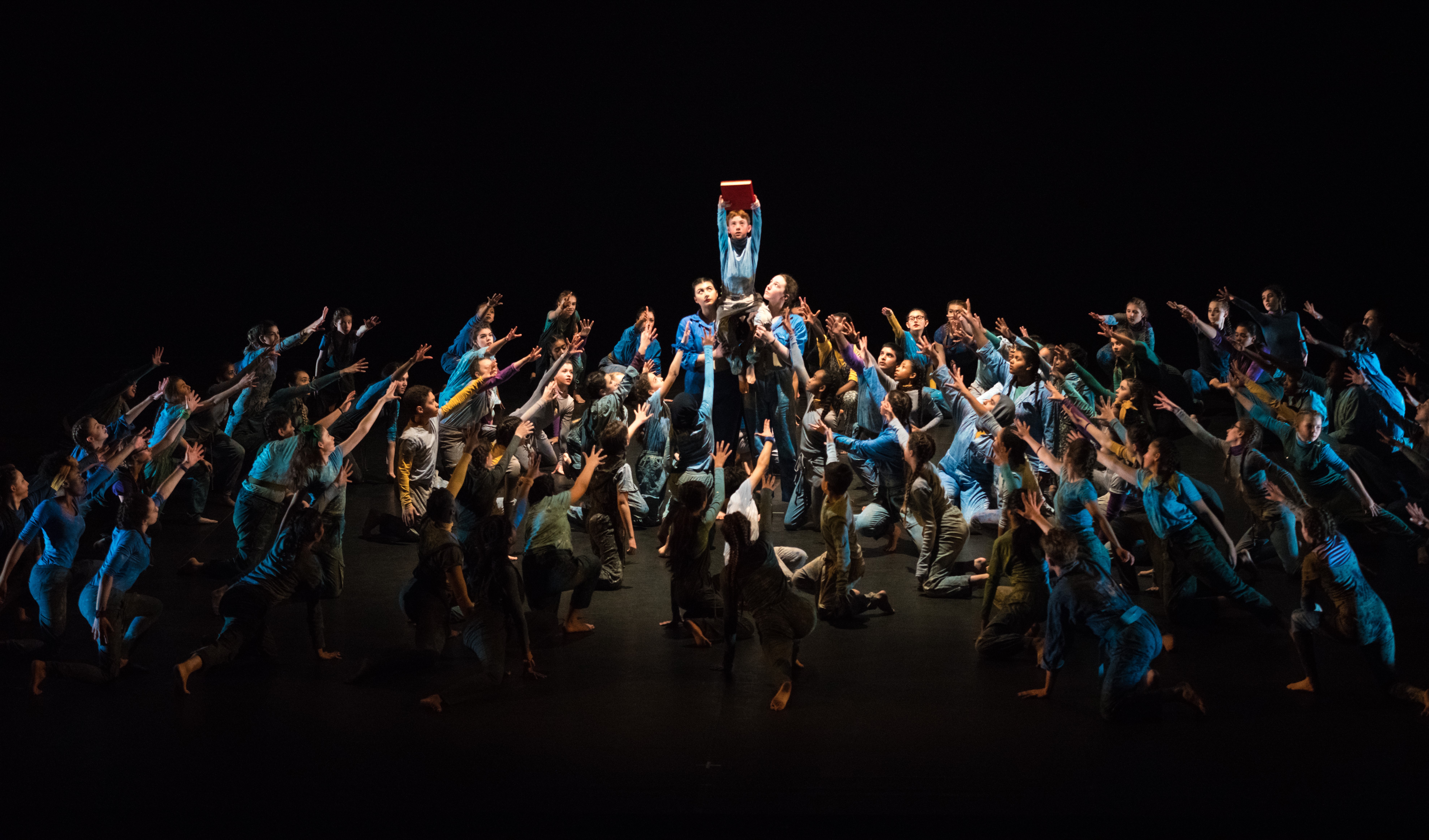
Dance Journeys, an initiative of ENB, connected schools through collaborative dance workshops. It was, and continues to be, a brilliant way to bring children and young people together with dance experts to work together in the world of performance art so that they can experience the rigours, disciplines, joys and inspiration of creating a new choreography for performance linked to themes highlighted in ENB’s current productions. What makes Dance Journeys particularly stand out to John Lyon’s Charity as a special model to highlight and celebrate is that it has allowed ENB to open its doors to normal schools across London. The project has provided not only dance opportunities to young people but new opportunities that they may never have experienced had it not been for our funding. As a result, the children, their parents and teachers at the schools who have taken part in Dance Journeys have all had the privilege to participate in a high-end professional production, whether it’s dancing on the stage or watching the magic happen from the audience. Dance Journeys has not only allowed young people to experience how a professional performance comes together but also reached a large number of pupils who may never have thought they would be interested in the arts sector.
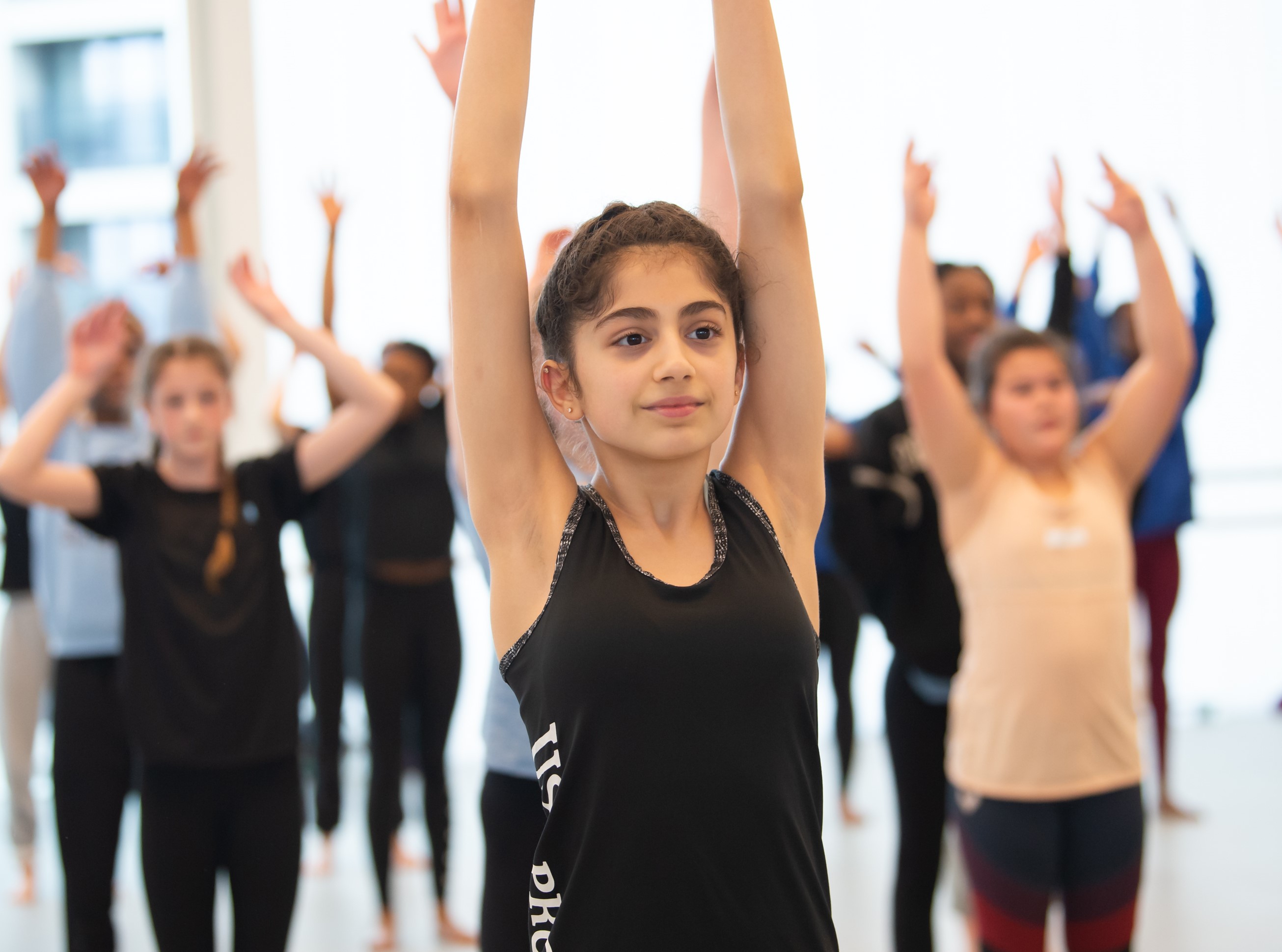
As a result, several young people have gone onto pursue careers in dance, for example joining English National Ballet’s youth company ENBYouthCo or the Ailey Studios in New York – following their involvement with the project. It is fantastic to see how this project has not only inspired young people but opened doors for them. The model is now so successful that there are plans to expand Dance Journeys even further with opportunities to take it to Southampton and work with schools and youth companies there, as well as plans to establish a project with the Royal College of Music (RCM) and the creation of a Creative Fellows programme in London.
With the joint confidence from both ENB and JLC in the Dance Journeys’ model, as well as the trusted relationship between organisation and funder, Dance Journeys has since become ENB’s flagship engagement project. Since 2013, over 900 young people have worked with ENB and experienced being part of a professional dance company. The first schools to participate were Capital City Academy (Brent) and Hammersmith Academy (Hammersmith & Fulham). Young students took part in Lest We Forget, the ground-breaking collaboration between ENB and Akram Khan Company to commemorate the First World War.
Dance Journeys incorporates wider aspects of ballet production, including sound, video and backstage work. Young people not only learn about dance but collaborate with other young, aspiring musicians from RCM Junior Department who often play specially commissioned music. The project enables young people to experience the same opportunities as a professional would within the arts industry. It is inclusive and no one is discriminated or left out because of who they are or where they come from. The project is not about finding London’s young new talent who will enter the profession but to give young people exposure to the creative world and allow them to be inspired, motivated and gain confidence.
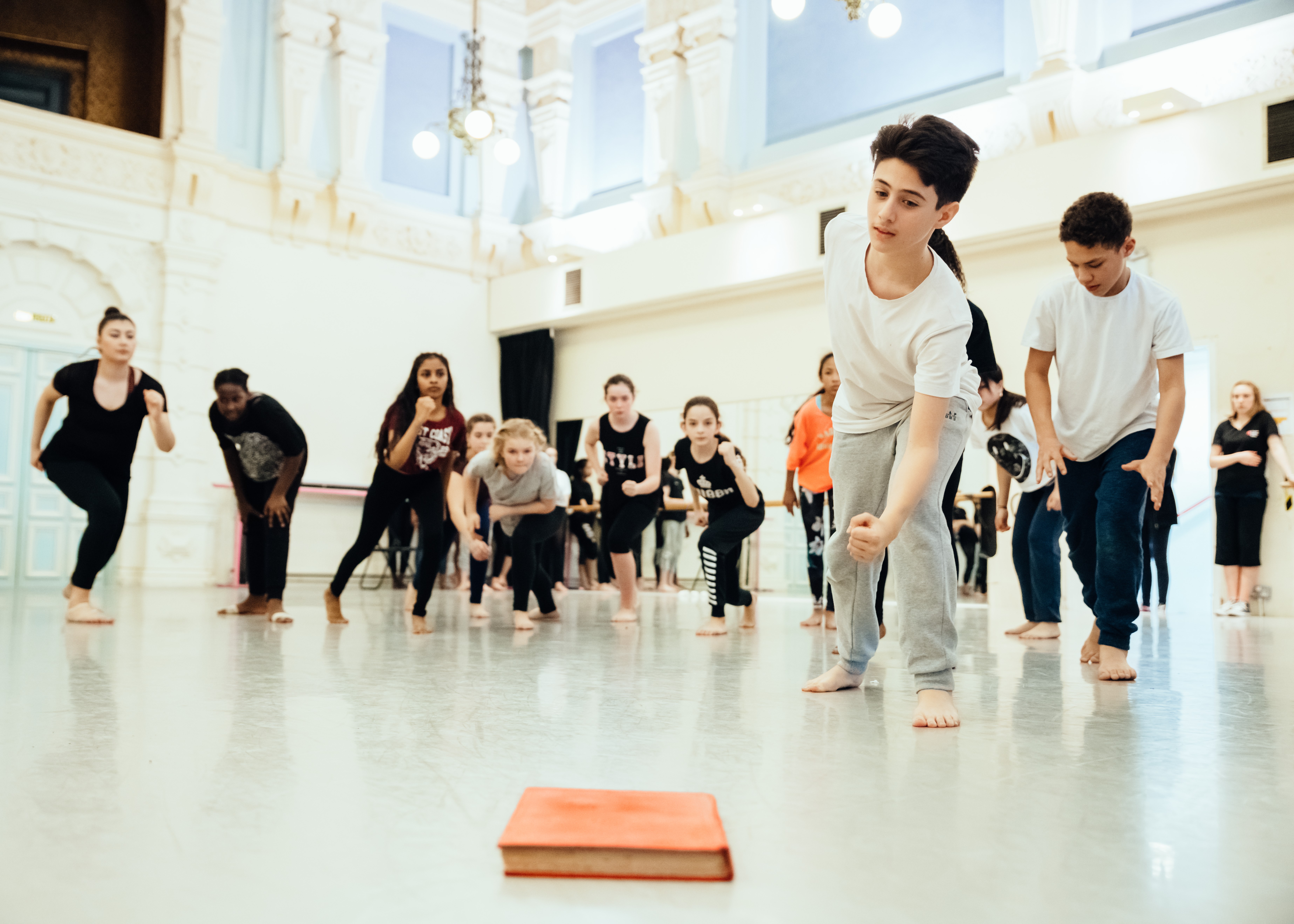 This project required ENB to take a leap of faith. With gentle and persistent encouragement from John Lyon’s Charity, Dance Journeys changed the way that ENB approaches its Creative Learning offer. Rather than it being siloed and separate from ENB’s main programme of work, Dance Journeys created an intrinsic bond between the professional ballet company and young people. When it started in 2014, Dance Journeys students were invited to perform as part of a curtain raiser to the ENB season at the Barbican, dancing on the same stage, but not to the same audience as the professional production. By 2019, ENB’s commitment to Dance Journeys had grown to the extent that it was now programmed as an evening performance during ENB’s Sadler’s Wells Theatre season She Persisted. Not only were young people influenced and inspired by ENB’s high quality and innovative body of works, Dance Journeys also gave the students an opportunity to dance alongside professional ballet dancers and Dance Journeys Unchartered 2019 was embedded as part of the main professional production at Sadler’s Wells with young people sharing the same stage as professional dancers.
This project required ENB to take a leap of faith. With gentle and persistent encouragement from John Lyon’s Charity, Dance Journeys changed the way that ENB approaches its Creative Learning offer. Rather than it being siloed and separate from ENB’s main programme of work, Dance Journeys created an intrinsic bond between the professional ballet company and young people. When it started in 2014, Dance Journeys students were invited to perform as part of a curtain raiser to the ENB season at the Barbican, dancing on the same stage, but not to the same audience as the professional production. By 2019, ENB’s commitment to Dance Journeys had grown to the extent that it was now programmed as an evening performance during ENB’s Sadler’s Wells Theatre season She Persisted. Not only were young people influenced and inspired by ENB’s high quality and innovative body of works, Dance Journeys also gave the students an opportunity to dance alongside professional ballet dancers and Dance Journeys Unchartered 2019 was embedded as part of the main professional production at Sadler’s Wells with young people sharing the same stage as professional dancers.
The impact on the young people of coming into close contact with professional ballet dancers, musicians and technicians cannot be underestimated and the resulting performances were profoundly moving and a testament to ENB’s forward thinking in this work. The logistical challenges for ENB to working in this way cannot be overestimated but with a shared desire to have a greater impact on children and young people, the success of Dance Journeys is largely down to the mutual respect between ENB and John Lyon’s Charity.
Fleur Derbyshire-Fox, Director of Engagement at ENB says “We simply couldn’t have evolved Dance Journeys without the support of John Lyon’s Charity. It really has been life changing for ENB because it has moved us on so much from where we were back in 2009. We call it our flagship project because it is a beacon for us and will continue to be. I think JLC took a punt and really trusted us to deliver something special for three years. I loved the trusted relationship with JLC, I just think it’s really special. What Dance Journeys proves is that if you have a trusted relationship with a funder, you can achieve so much. It really does feel like a partnership”.
The impact of Dance Journeys can be demonstrated by the story of Ludgero Souza who began participating in Dance Journeys in 2016, through Friern Barnet School. After discovering a love of dance and developing his skills through the programme from 2016—2018, he successfully gained a place in ENBYouthCo in 2019, and is still an active member of the youth company. He gained an ENB professional placement during lockdown, demonstrating dance material for lead artists for ENB online platform BalletActive and the newly launched ENBYouthCo-nnect. By taking part in Dance Journeys, Ludgero found his passion for dance and decided to pursue his interest further.
Louise Peacock (Dance Teacher) from Copthall School, commented: “Dance Journeys has given our students the most amazing experience of working within a professional environment. The opportunity of working with a professional choreographer has totally inspired them and their growth in terms of becoming confident and engaging performers has been exceptional.”
ENB seeks to repeat Dance Journeys each year, keeping it relevant and in tune to the needs of young people. It has become a model of good practice and is currently being adapted for regional partnership work including Raymonda in Southampton in 2022. It has become part of the talent pipeline into dance and the creative arts, with more career opportunities and signposting to apprenticeships and professional placements being included – which are needed for our young people now more than ever before.
We are incredibly proud of how Dance Journeys has grown and evolved in the last six years and look forward to continuing the positive and trusted relationship with ENB in years to come. If you would like to find out more about Dance Journeys, please click here. –Dance Journeys – English National Ballet

